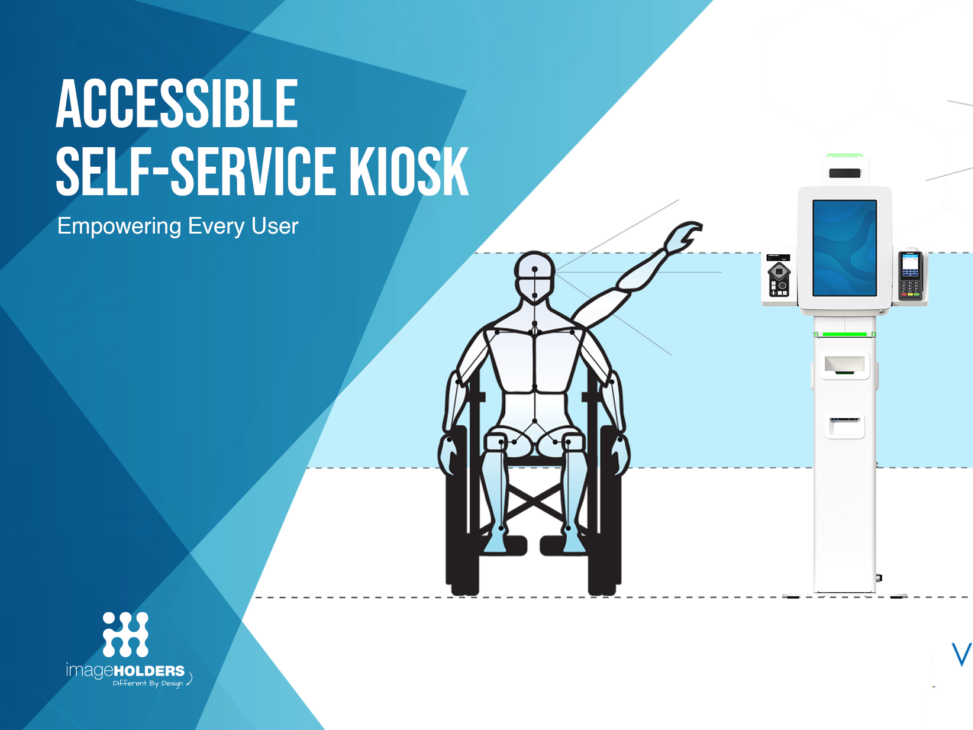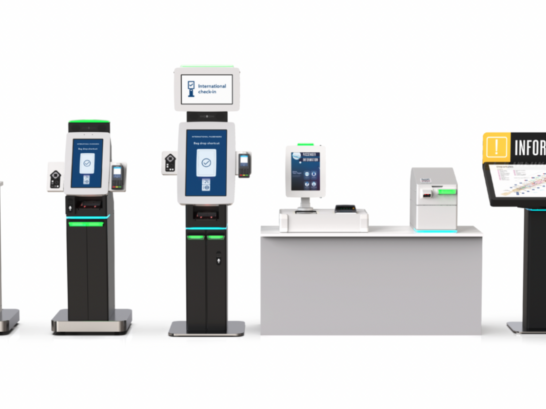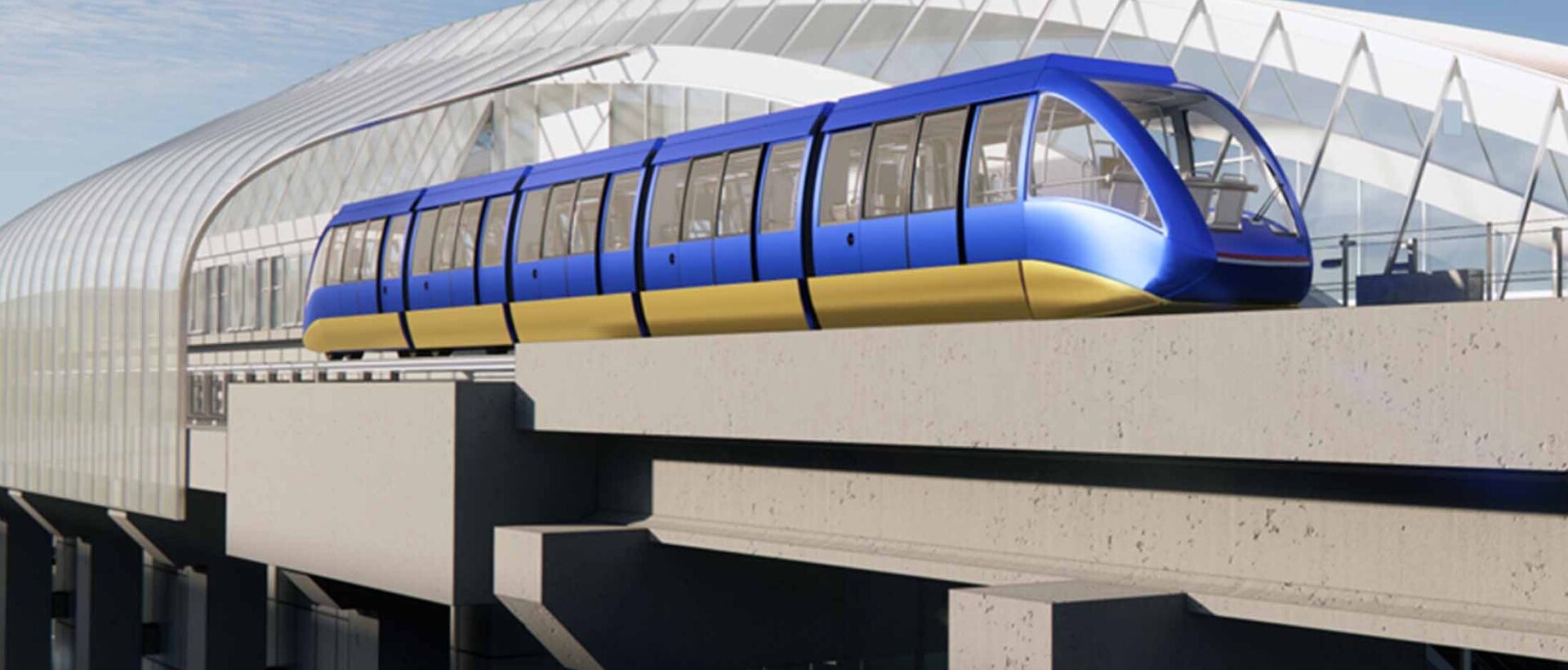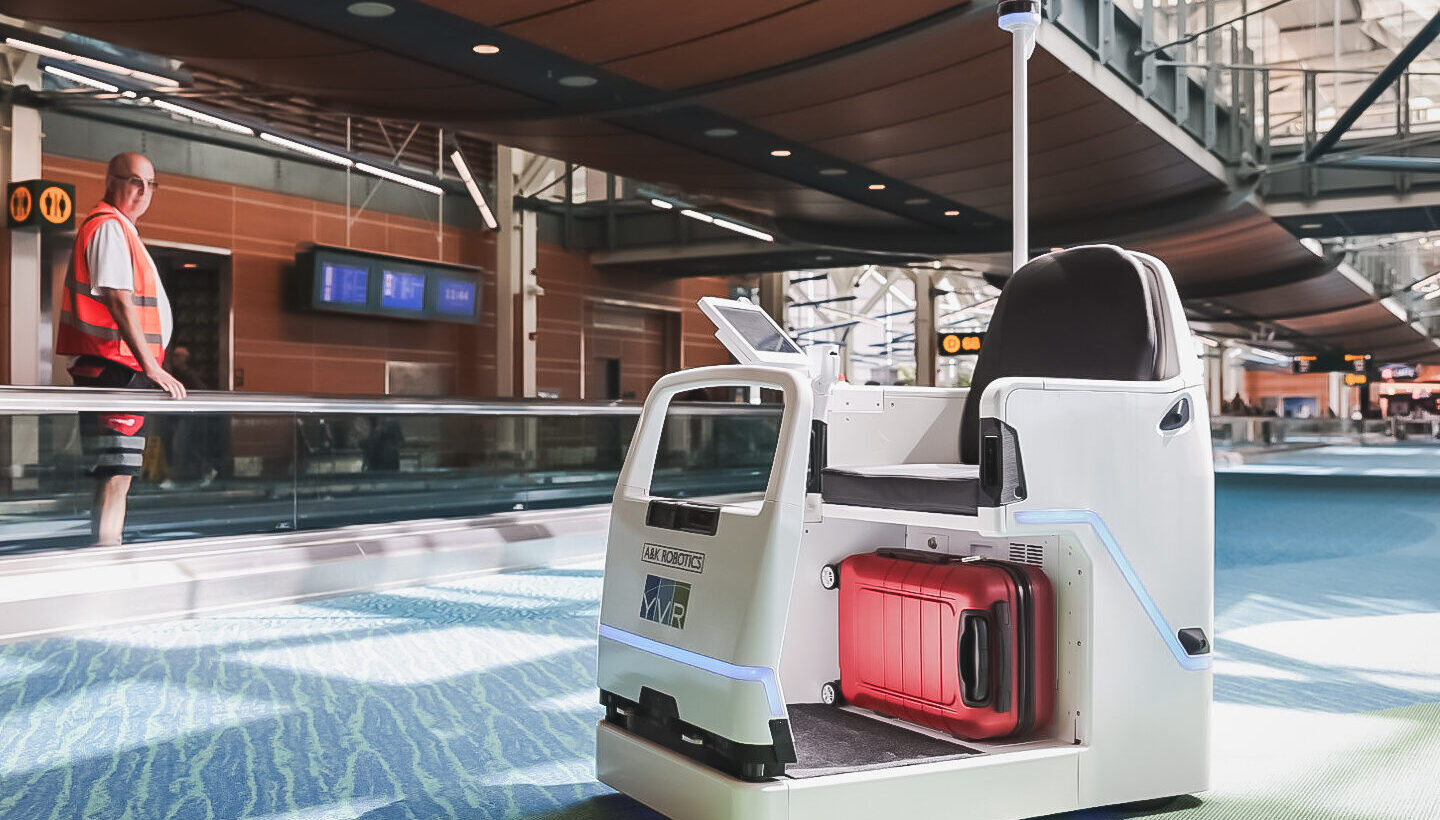In this blog, we’ll explore how digital and self-service kiosks are playing a pivotal role in improving accessibility in airports.
Airlines around the world continue to strive to try to create more inclusive experiences for all passengers. With millions of people traveling each year, including those with disabilities or reduced mobility, the aviation industry is embracing cutting-edge technology to enhance accessibility and streamline the travel experience.
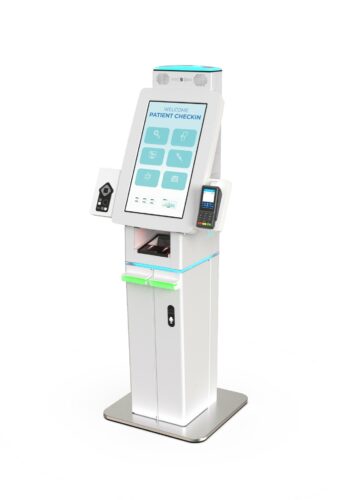
Self-service kiosks with assistive features and AI-powered solutions are becoming prominent integrations. With new accessibility laws coming into effect in 2025, mandating stricter requirements for airports and airlines to provide inclusive services and accommodations for passengers with disabilities, airlines must ensure a more equitable and accessible travel experience for all.
Self-Service Kiosks Equipped for Accessible Journeys
In this blog, we’ll explore how digital and self-service kiosks are playing a pivotal role in improving accessibility in airports. As airports become more reliant on technology to streamline passenger experiences, self-service kiosks equipped with accessible features are transforming the way people navigate terminals, check-in, and manage their journeys.
From intuitive touchscreens designed for ease of use to assistive technologies like screen readers and voice commands, these kiosks are empowering passengers with disabilities to travel more independently and efficiently. We’ll dive into the latest innovations and how they’re making air travel more inclusive for all.

Enhancing Accessibility with Digital Self-Service Kiosks
In the next section, we’ll examine how digital kiosks are revolutionizing accessibility in airports, giving passengers greater autonomy and making the travel experience more inclusive. By integrating assistive technologies and user-friendly interfaces, these kiosks are enabling travellers with disabilities to manage tasks like check-in, bag drop, and flight updates independently, reducing the need for additional assistance and creating a smoother, more empowering journey for all passengers.
Text-to-Speech Functionality
Kiosks equipped with text-to-speech functionality are making a significant difference for visually impaired passengers by enabling them to navigate essential airport tasks independently. With this assistive feature, passengers can interact with the kiosk using voice prompts that guide them through the check-in process, help them access real-time flight information, and provide directions within the airport. By converting on-screen text into audible instructions, these kiosks eliminate the need to read screens, allowing visually impaired travellers to move through their journey with greater confidence and autonomy.
Touchscreen and Voice Command
Kiosks that offer dual input methods, such as touchscreens and voice commands, provide greater flexibility and accessibility for passengers with diverse abilities or preferences. By allowing users to interact with the kiosk either by touch or voice, these systems accommodate individuals with varying needs, such as those with mobility impairments or visual disabilities.
Passengers can choose the input method that works best for them, ensuring a smoother and more personalized experience. This inclusive design empowers all travelers to independently manage tasks like check-in, bag drop, and flight updates, making the travel process more accessible and user-friendly.
Airport Kiosks with Multilingual Support
Providing multilingual interfaces on airport kiosks is crucial for ensuring an inclusive and seamless experience for passengers who may not speak the local language. By offering visual and auditory support in multiple languages, kiosks can help travelers easily navigate key tasks such as check-in, flight updates, and baggage handling without confusion or the need for assistance.
This feature is especially important in international hubs, where passengers come from diverse linguistic backgrounds. Multilingual interfaces, both visual through clear on-screen prompts and auditory through spoken instructions, ensure that all travelers can access the information and services they need, regardless of language barriers, fostering a more comfortable and accessible journey.
Hearing Assistance Features
Digital kiosks are equipped with several features that enhance accessibility for passengers with hearing impairments, helping them navigate the airport experience more independently. Closed captioning provides on-screen text for any audio instructions, ensuring that key information is accessible without the need for sound. Visual indicators, such as flashing lights or symbols, alert passengers to important updates or prompts during their interactions with the kiosk.
Additionally, some kiosks are integrated with looping systems that connect directly to hearing aids, amplifying sound for those with hearing loss. These features work together to provide a more inclusive and accommodating travel experience for passengers with hearing impairments.
Kiosks with Integrated Assistance for Mobility Services
Kiosks play a vital role in supporting passengers with reduced mobility by providing easy access to essential services like wheelchair assistance, personalized support, and priority seating—all without the need to stand in long queues. Through intuitive and accessible interfaces, passengers can request mobility aids or special services with just a few taps, reducing the physical strain and time spent waiting in line.
These kiosks also allow travelers to input specific accessibility needs ahead of time, ensuring that staff are prepared to offer tailored assistance upon arrival. By streamlining the process, digital kiosks empower passengers with reduced mobility to move through the airport with greater ease and independence.
Accessibility-Focused Airport Kiosks from imageHOLDERS
imageHOLDERS is a leading provider of custom digital kiosks, designed with accessibility at the forefront. Specializing in creating inclusive self-service solutions, imageHOLDERS combines cutting-edge technology with ergonomic design to ensure that passengers of all abilities can navigate airports with ease.
With a focus on intuitive user interfaces and assistive features such as voice commands, text-to-speech, and multilingual support, imageHOLDERS’ kiosks are transforming the way airports serve their diverse passenger base, making travel more efficient and accessible for everyone.
imageHOLDERS’ kiosks can be built around bespoke requirements, offering a highly customizable solution that integrates a wide range of features beyond those already mentioned.
From biometric authentication and payment systems to advanced security measures and environmental sensors, these kiosks can be tailored to meet the specific needs of airports and passengers alike. Whether enhancing accessibility or streamlining operational efficiency, imageHOLDERS provides flexible, innovative solutions designed to accommodate any environment or service requirement.
Tips for Improving Airport Accessibility with Digital Kiosks:
- Incorporate Assistive Technologies: Ensure your kiosks include essential accessibility features like text-to-speech, voice commands, and closed captioning to cater to passengers with visual or hearing impairments.
- Offer Multilingual Support: Implement visual and auditory prompts in multiple languages to accommodate international travelers and ensure an inclusive experience for all.
- Provide Dual Input Methods: Install kiosks that allow both touchscreen and voice command inputs, giving passengers with different abilities and preferences the flexibility to use the method that suits them best.
- Regularly Test for Usability: Conduct frequent usability tests with passengers of varying abilities to ensure the kiosks remain accessible, user-friendly, and compliant with the latest accessibility standards.
- Future-Proof Your Solutions: Stay ahead of the upcoming 2025 accessibility laws by consulting with experts like imageHOLDERS, ensuring that your kiosks meet legal requirements and continue to offer inclusive services.
Warnings to Consider for Airport Accessibility Kiosks:
- Neglecting Accessibility Compliance: Failing to integrate accessibility features in your kiosks can lead to legal penalties under the upcoming 2025 laws, as well as customer dissatisfaction.
- Overcomplicating Interfaces: Avoid adding unnecessary features that make kiosks difficult to navigate. Accessibility solutions should be intuitive and easy to use, ensuring passengers of all abilities can interact with them effectively.
- Inadequate Maintenance: Ensure your kiosks are regularly updated and serviced. Outdated software or faulty hardware can result in accessibility features not functioning properly, negatively impacting the passenger experience.
- Ignoring Feedback from Disabled Passengers: Dismissing or overlooking feedback from passengers with disabilities can hinder your ability to improve accessibility and design truly inclusive solutions.
- Failing to Train Staff: Kiosks alone may not be enough. Make sure your staff is trained to assist passengers with disabilities and support them in using kiosk features, especially during initial implementation stages.
Ensure you’re compliant for 2025!
With new accessibility laws coming into force in 2025, now is the time to ensure your airport or business is fully compliant and prepared to meet these regulations.
Our team at imageHOLDERS is here to help you navigate the requirements and integrate the necessary features into your digital kiosks. By working with us, you can ensure that your services remain accessible to all passengers, meet upcoming legal standards, and enhance the overall travel experience. Talk to us today to future-proof your operations and stay ahead of these important changes.

FAQ: How Digital Kiosks are Transforming Airport Accessibility
1. Why is accessibility in airports important?
Accessibility in airports is crucial because it ensures that all passengers, including those with disabilities or reduced mobility, can navigate the airport and manage their travel experience independently and efficiently. With millions of people traveling each year, creating an inclusive environment improves the overall experience and ensures compliance with upcoming legal requirements.
2. How are digital kiosks improving accessibility in airports?
Digital kiosks improve accessibility by providing features such as text-to-speech functionality, dual input methods (touchscreens and voice commands), multilingual interfaces, and hearing assistance features. These innovations allow passengers with diverse needs to check in, manage their journey, and access essential services independently, reducing the need for additional assistance.
3. How do kiosks help visually impaired passengers?
Kiosks equipped with text-to-speech functionality guide visually impaired passengers through the check-in process, provide real-time flight information, and offer directions within the airport. By converting on-screen text into audible instructions, kiosks enable visually impaired travelers to navigate independently.
4. How do kiosks accommodate passengers with hearing impairments?
Digital kiosks support passengers with hearing impairments through features such as closed captioning for audio instructions, visual indicators like flashing lights, and looping systems that connect directly to hearing aids, ensuring key information is accessible without sound.
5. Can kiosks be used by passengers with reduced mobility?
Yes, kiosks allow passengers with reduced mobility to request services like wheelchair assistance, personalized support, and priority seating. The intuitive interfaces streamline these requests, reducing wait times and providing easier access to essential services.
6. How do multilingual interfaces help travelers?
Multilingual interfaces, both visual and auditory, ensure that passengers who do not speak the local language can easily navigate key tasks such as check-in, flight updates, and baggage handling. This feature is particularly important in international airports to accommodate passengers from diverse linguistic backgrounds.
7. What accessibility features do imageHOLDERS kiosks offer?
imageHOLDERS’ kiosks are designed with accessibility in mind and offer features such as text-to-speech, voice commands, multilingual support, hearing assistance, and customizable options for mobility services. They can also be tailored to include biometric authentication, payment systems, and environmental sensors based on bespoke requirements.
8. What are the new accessibility laws coming into effect in 2025?
In 2025, new accessibility laws will require airports and airlines to implement stricter measures to accommodate passengers with disabilities. This includes providing inclusive services, and accessible technologies, to ensure all facilities and systems meet the latest legal standards for accessibility.
9. How can imageHOLDERS help with compliance for the 2025 accessibility laws?
imageHOLDERS can help your airport or business comply with the new 2025 accessibility regulations by designing custom kiosk solutions that integrate the necessary accessibility features. Our team ensures that your services remain accessible, compliant, and future-proof while enhancing the travel experience for all passengers.
10. How can I get more information or discuss a custom kiosk solution?
To learn more or discuss how imageHOLDERS can create a custom kiosk solution for your airport or business, contact us today. We’re here to help you ensure compliance, enhance accessibility, and offer seamless service to all passengers.
This article was originally published by imageHOLDERS.






